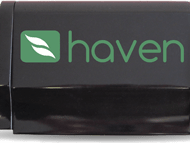An internet-connected wireless HVAC (heating, ventilation and air conditioning) zoning system used in homes or buildings with forced-air equipment (furnaces, air conditioners, heat pumps, etc.) to provide advanced comfort control. The system is designed to be installed and programmed by a licensed contractor and managed by home or buildings owners. The system consists of a controller, zone thermostats, mobile application interfaces, and dampers. The dampers are installed into ductwork; the thermostats into the areas they control; and the controller near the HVAC equipment.
Normally homes and smaller buildings are outfitted with a single thermostat, a single piece of HVAC equipment, and ductwork that channels airflow to the space (often without dampers). The thermostat follows the user’s settings for heating or cooling by switching on the equipment (wired or wirelessly) to condition the space. For forced-air ductwork, the equipment heats or cools the space until the thermostat set points are reached.
Zoning works in a similar way although additional thermostats are used to split the space into more manageable areas. Each zone has a thermostat and a set of dampers that open when that area requires heating or cooling. Every zone that does not require heating or cooling will close which means the equipment will only serve the areas that are needed.
This system has an internet-connected mesh network controller, energy harvesting wireless dampers, and mobile thermostats. The controller is set up by a contractor using any smartphone or tablet and can be programmed to work any piece of equipment. It connects to the internet via the user’s router so that the owner may have remote thermostat access. It also acts as the coordinator for the mesh network that each device is connected to. The dampers harvest “wind” energy produced by the equipment with a small rotary impeller (on the damper). They are 2-postion dampers that accept wireless signals from the controller to open or close. The damper generates enough energy while the damper is open (and equipment is running) to operate without downtime. The mobile thermostats (in each zone) may be placed on any table/bookshelf or transported around with the user. They act like temperature controllers with a small form factor which leaves the user’s app responsible for setting up any thermostat scheduling or advanced programming.
The system differs from what is currently in the zoning market because of the wireless technology. Usually, dampers and thermostats are hard-wired to a controller which causes HVAC professionals to spend additional hours for installation. The more hours spent on an install the less jobs a contractor can get to and more money is charged to the user. By simplifying installation, zoning can be cheaper and less time consuming. Pair this with the energy savings from energy scavenging devices and it makes for a more environmentally safe product.
Like this entry?
-
About the Entrant
- Name:Adam Bush
- Type of entry:teamTeam members:Arzel Technology Inc.
- Patent status:pending








